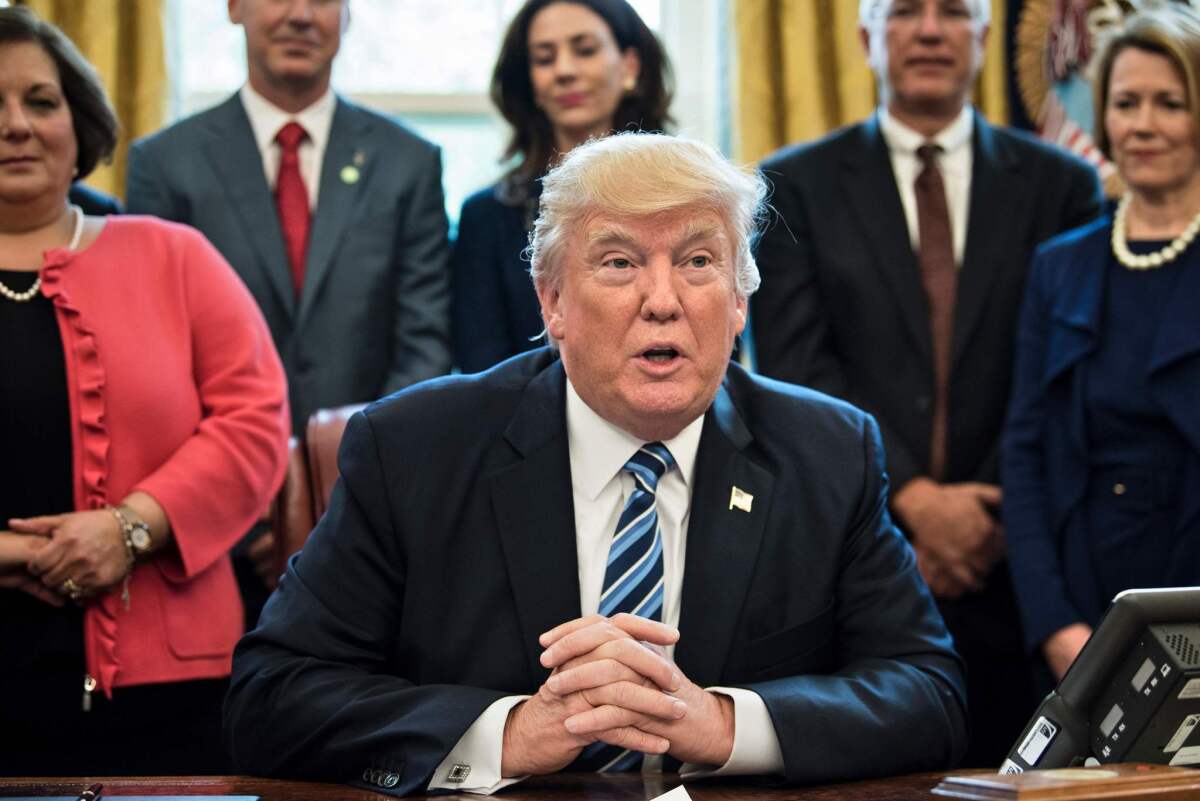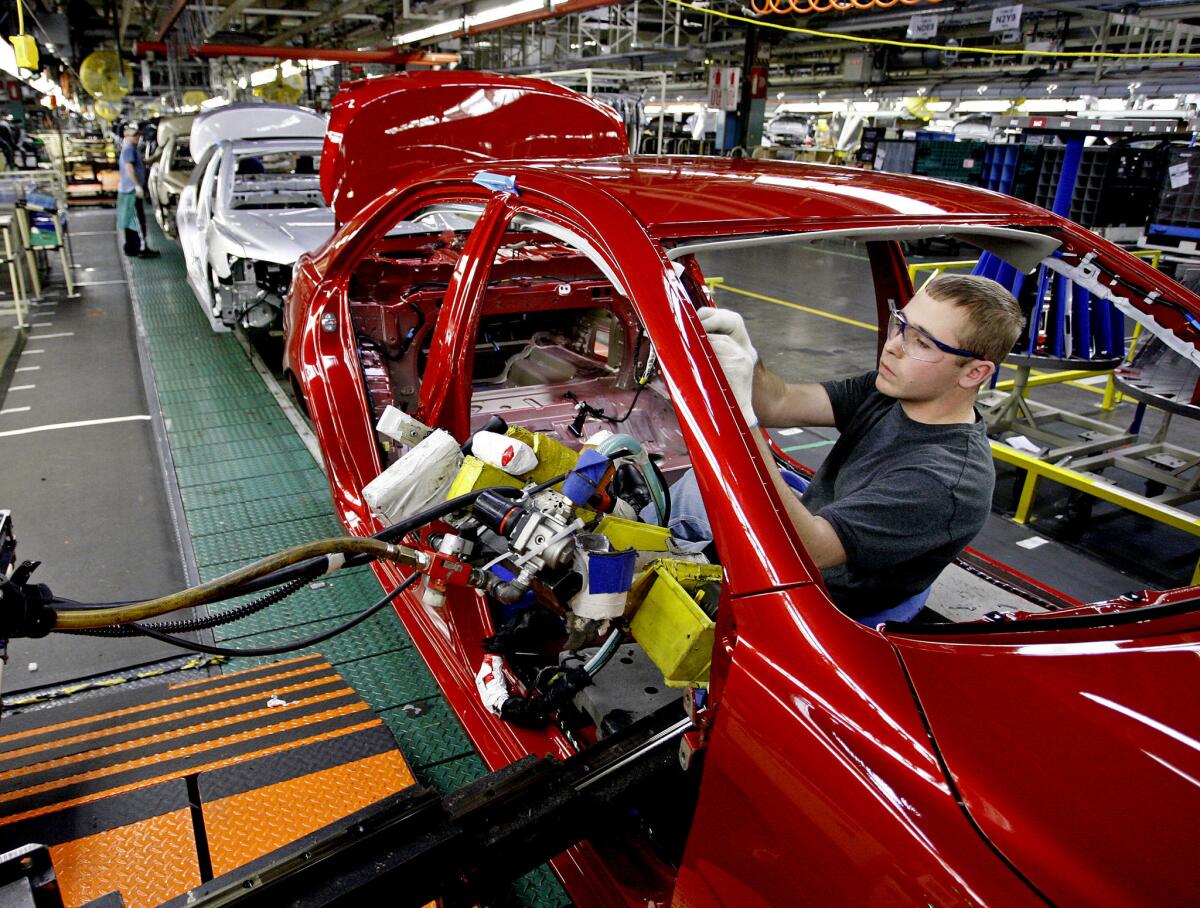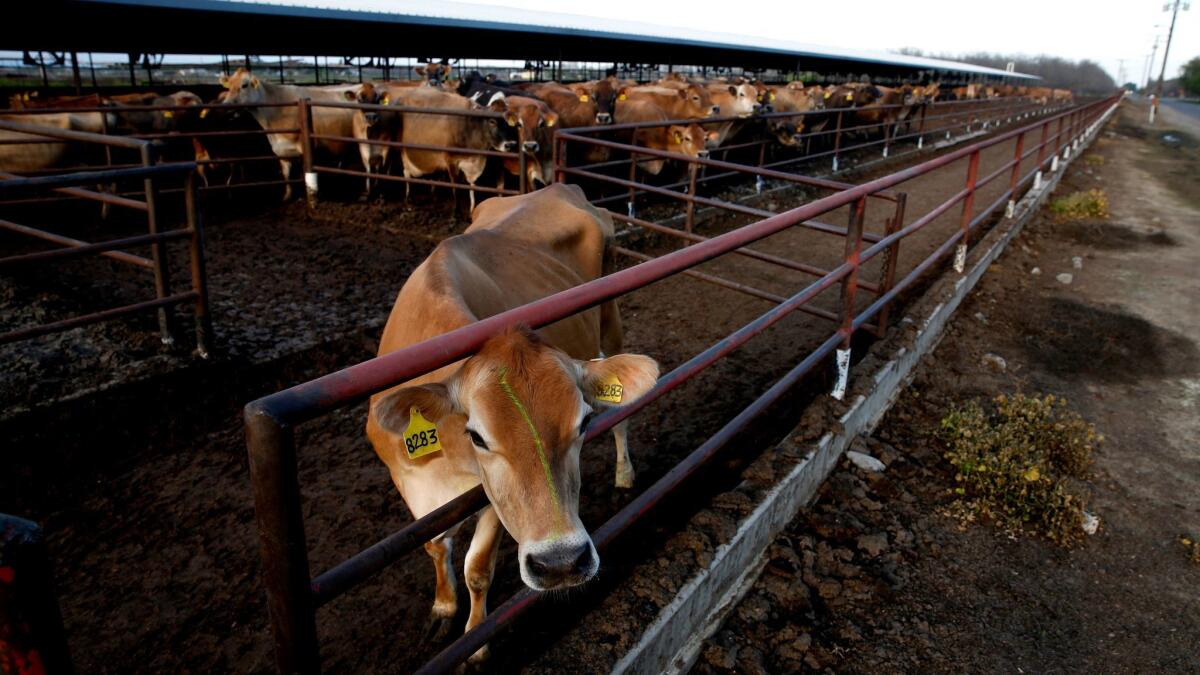What’s on the table in a NAFTA negotiation

- Share via
It seemed that the Trump administration was planning to end the
But if a “fair deal for all” couldn’t be reached, he added minutes later, he would, in fact, blow up the agreement.
While it is not easy to predict the president’s next move on NAFTA, he does seem determined to get to the negotiating table, fast. Here are key items that will almost certainly be up for debate.
North American made
A key point on which the three trading partners may find common ground, experts say, is changing the rules in the agreement on the content of products traded among the three countries. The agreement says that in order for a good to pass through the three countries duty-free, it needs to contain a certain percentage of North American content.
There are different thresholds for different products. Cars, which are among the highest-value good traded between the three nations, must be made up of 62.5% American, Canadian or Mexican content. Trump wants to raise the percentage of North American parts in all NAFTA goods, meaning that fewer Asian parts could go into the cars that cross U.S. borders without any tariff. That could help all three economies, experts say, because it could fuel a manufacturing supply chain that runs through each country.
“There’s been talk about creating more of a regional manufacturing hub,” says Thomas J. Bollyky, a fellow at the Council on Foreign Relations. “I think there’s actually some openness to that.”
The tweak could produce more of the blue-collar jobs that Trump has promised to deliver, by spurring the industries in the U.S. that produce vehicle components, for example.
But it is also possible that Trump will demand that there be more U.S.-made content in NAFTA goods. That would not go over well with the two other parties, because it would directly dent their manufacturing bases.
Even the aim of inducing companies to open more factories in this country may not work out, experts say.
“There’s a point at which it is cheaper to import directly and forget about NAFTA,” says William Reinsch, a trade expert at the Stimson Center, a Washington-based think tank. Reinsch says the average U.S. tariff for goods from countries outside of North America is 3%, a relatively low tax. There are some companies, he says, that would save money by importing from China or Japan rather than pouring money into new facilities in the U.S.

The dairy and wood war
There is a long history of tension between the United States and Canada over lumber and milk. The U.S. imports a lot of Canadian softwood lumber, and domestic producers have for decades accused our northern trading partner of unfairly subsidizing the industry. Canadian companies grow timber on government-owned land, while their U.S. peers have to use private land.
Trump threw wood onto that fire this week when his administration retaliated with a 20% tariff on Canadian softwood lumber. Commerce Secretary Wilbur Ross accused Canada of “dumping lumber” onto U.S. markets, and said this wouldn’t happen “if NAFTA were functioning properly.”
The U.S. imported $5.8 billion of lumber from Canada in 2016, so the tariff will inevitable be on the table in a NAFTA renegotiation.
Dairy is another point of contention. Farmers in the U.S. accuse Canada of protecting its dairy industry by imposing high tariffs on dairy imports. But for years, U.S. farmers have been selling Canada a relatively new product called “ultra-filtered milk,” used to make cheese, which is not subject to any tax.
“There was a loophole in their restrictions, we found it and proceeded to exploit it, and that made them upset,” Reinsch said.
But, as Mother Jones has reported, Canadian processors and farmers reached an agreement in February that lowered the price of some domestic dairy products, which has hobbled demand for U.S. ultra-filtered milk. Trump responded this week on Twitter, and he and Canadian Prime Minister Justin Trudeau discussed the cross-border dairy industry on a phone call this week. It will come up again in NAFTA talks, experts say.

Public projects
Trump’s administration has indicated it wants to review the rules that allow Mexican and Canadian companies to bid on U.S. government — federal and state — contracts. Senators Tammy Baldwin of Wisconsin and Jeff Merkley of Oregon recently wrote to the president to demand that he exclude those government procurement jobs from NAFTA, so that only American companies can compete for public projects.
Trump’s “Buy American, Hire American” push is in line with such a policy, but he will likely get pushback from Canada and Mexico.
State and local governments spend billions of dollars each year buying tons of products — ranging from toilet paper to sophisticated environmental control equipment to big-ticket items like a new subway system. The stakes are high for foreign companies that provide goods or services to American states and cities, and they will likely pressure Trudeau and Mexican President Enrique Pena Nieto to lobby for their right to that work.
Inside the business of entertainment
The Wide Shot brings you news, analysis and insights on everything from streaming wars to production — and what it all means for the future.
You may occasionally receive promotional content from the Los Angeles Times.








